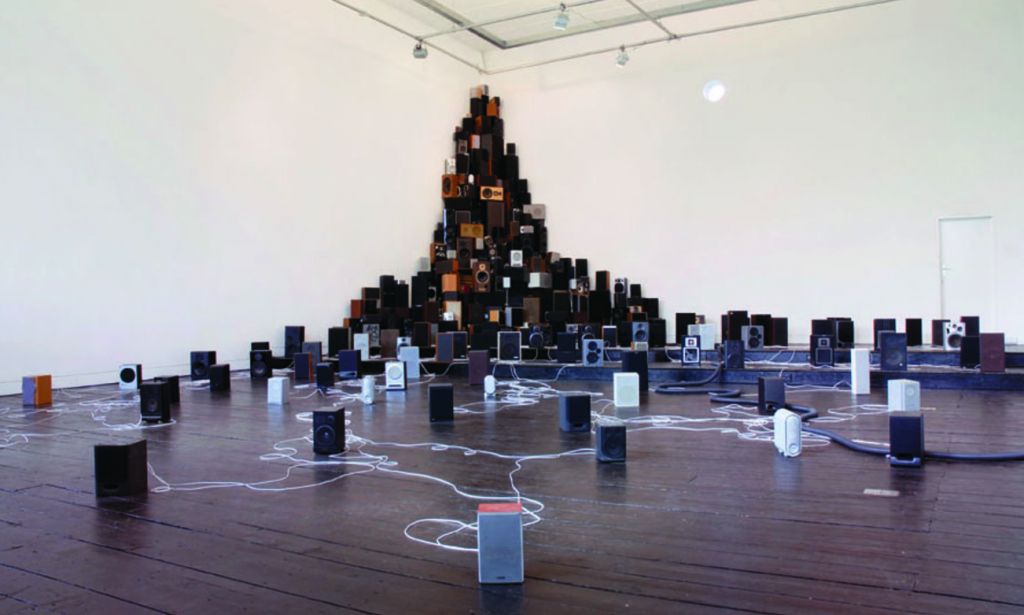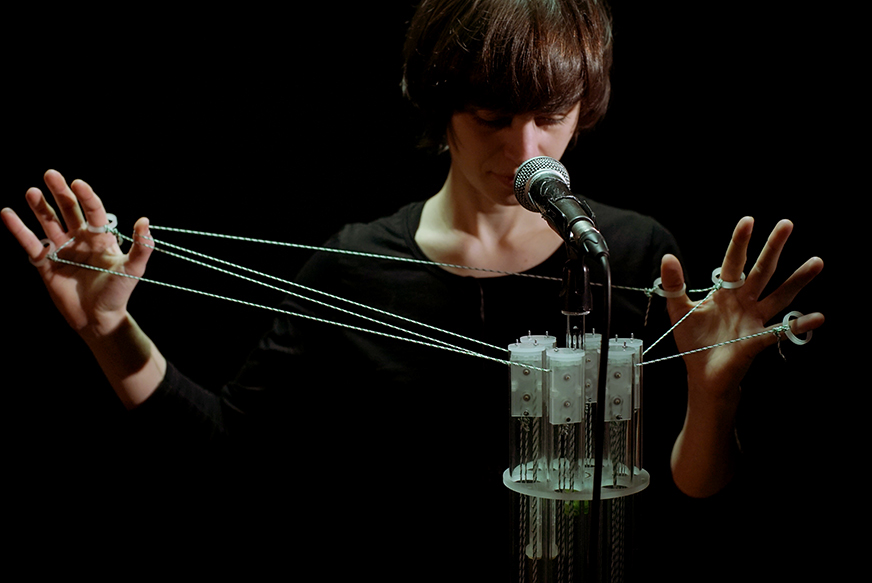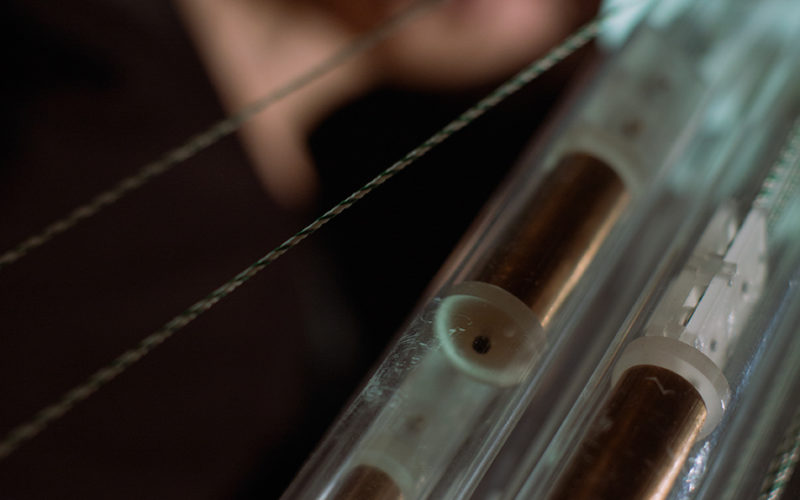For my project, I used turtle graphics to create a spiral. With each iteration, I modified each length and starting rotation to create a smooth spiral. Furthermore, I modified to color to change as the turtle graphics changes. It further emphasizes the spiral with the energetic red at the points with the subdued blue in the back.
kdlee-project-11
var iterations = 100;//number of forloop iterations
var rAngle = 90;//turn angle
function setup() {
createCanvas(600, 600);
background(0);
var kyle = makeTurtle(300, 200);
for(var i = 0; i < iterations; i++){
var len = 100 - i;
var r = map(i, 0, iterations, 0, 255);
var g = 50;
var b = map(i, 0, iterations, 150, 0);
kyle.setColor(color(r, g, b));
kyle.penDown();//drawing
kyle.forward(len);
kyle.right(rAngle);
kyle.forward(len);
kyle.right(rAngle);
kyle.forward(len);
kyle.right(rAngle);
kyle.forward(len);
kyle.right(rAngle);
kyle.penUp();//adjusting for next draw
kyle.forward(100);
kyle.right(rAngle);
kyle.forward(100);
kyle.right(1);
}
}
function turtleLeft(d){this.angle-=d;}function turtleRight(d){this.angle+=d;}
function turtleForward(p){var rad=radians(this.angle);var newx=this.x+cos(rad)*p;
var newy=this.y+sin(rad)*p;this.goto(newx,newy);}function turtleBack(p){
this.forward(-p);}function turtlePenDown(){this.penIsDown=true;}
function turtlePenUp(){this.penIsDown = false;}function turtleGoTo(x,y){
if(this.penIsDown){stroke(this.color);strokeWeight(this.weight);
line(this.x,this.y,x,y);}this.x = x;this.y = y;}function turtleDistTo(x,y){
return sqrt(sq(this.x-x)+sq(this.y-y));}function turtleAngleTo(x,y){
var absAngle=degrees(atan2(y-this.y,x-this.x));
var angle=((absAngle-this.angle)+360)%360.0;return angle;}
function turtleTurnToward(x,y,d){var angle = this.angleTo(x,y);if(angle< 180){
this.angle+=d;}else{this.angle-=d;}}function turtleSetColor(c){this.color=c;}
function turtleSetWeight(w){this.weight=w;}function turtleFace(angle){
this.angle = angle;}function makeTurtle(tx,ty){var turtle={x:tx,y:ty,
angle:0.0,penIsDown:true,color:color(128),weight:1,left:turtleLeft,
right:turtleRight,forward:turtleForward, back:turtleBack,penDown:turtlePenDown,
penUp:turtlePenUp,goto:turtleGoTo, angleto:turtleAngleTo,
turnToward:turtleTurnToward,distanceTo:turtleDistTo, angleTo:turtleAngleTo,
setColor:turtleSetColor, setWeight:turtleSetWeight,face:turtleFace};
return turtle;}
![[OLD – FALL 2016] 15-104 • COMPUTING for CREATIVE PRACTICE](https://courses.ideate.cmu.edu/15-104/f2016/wp-content/uploads/2020/08/stop-banner.png)





